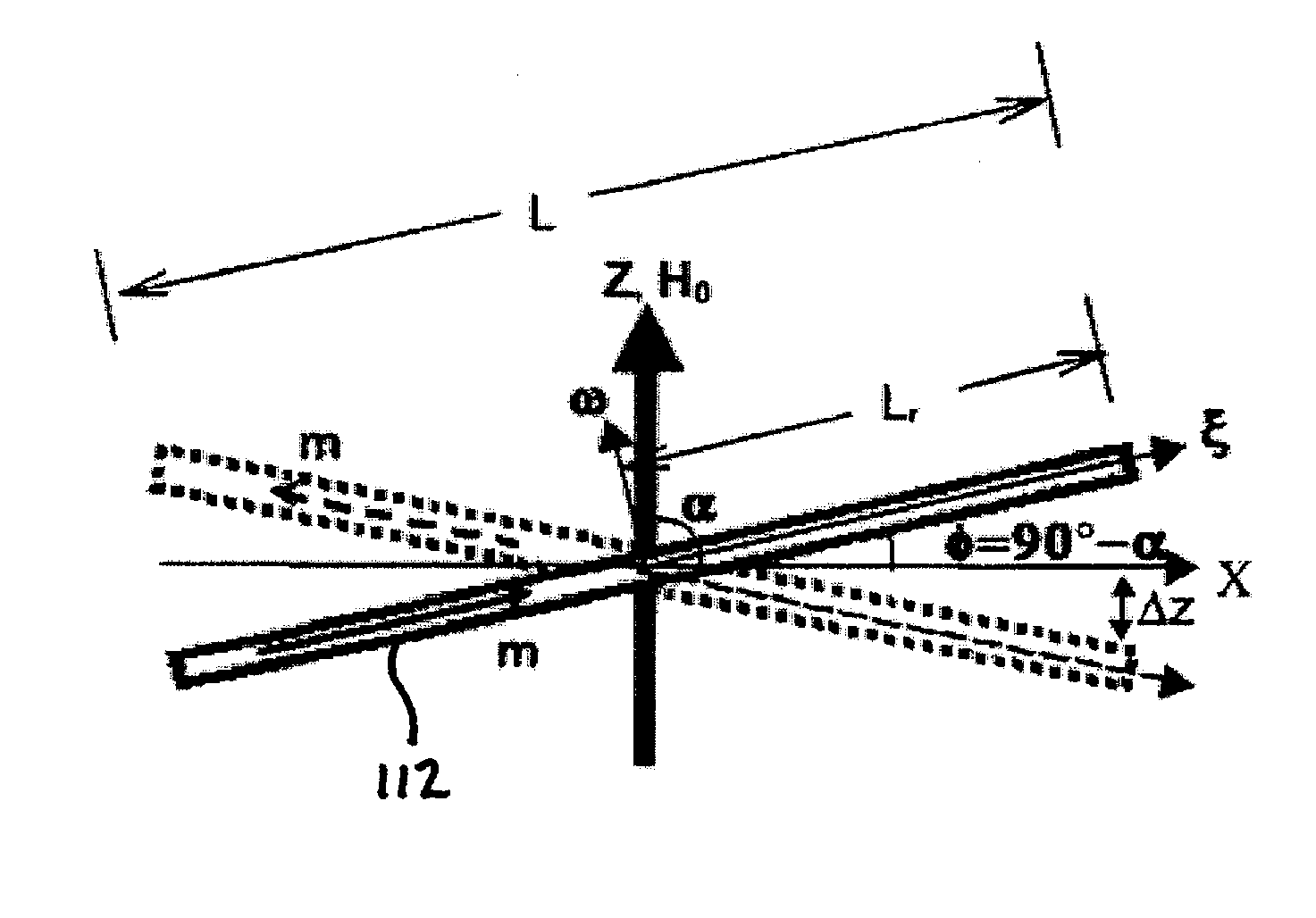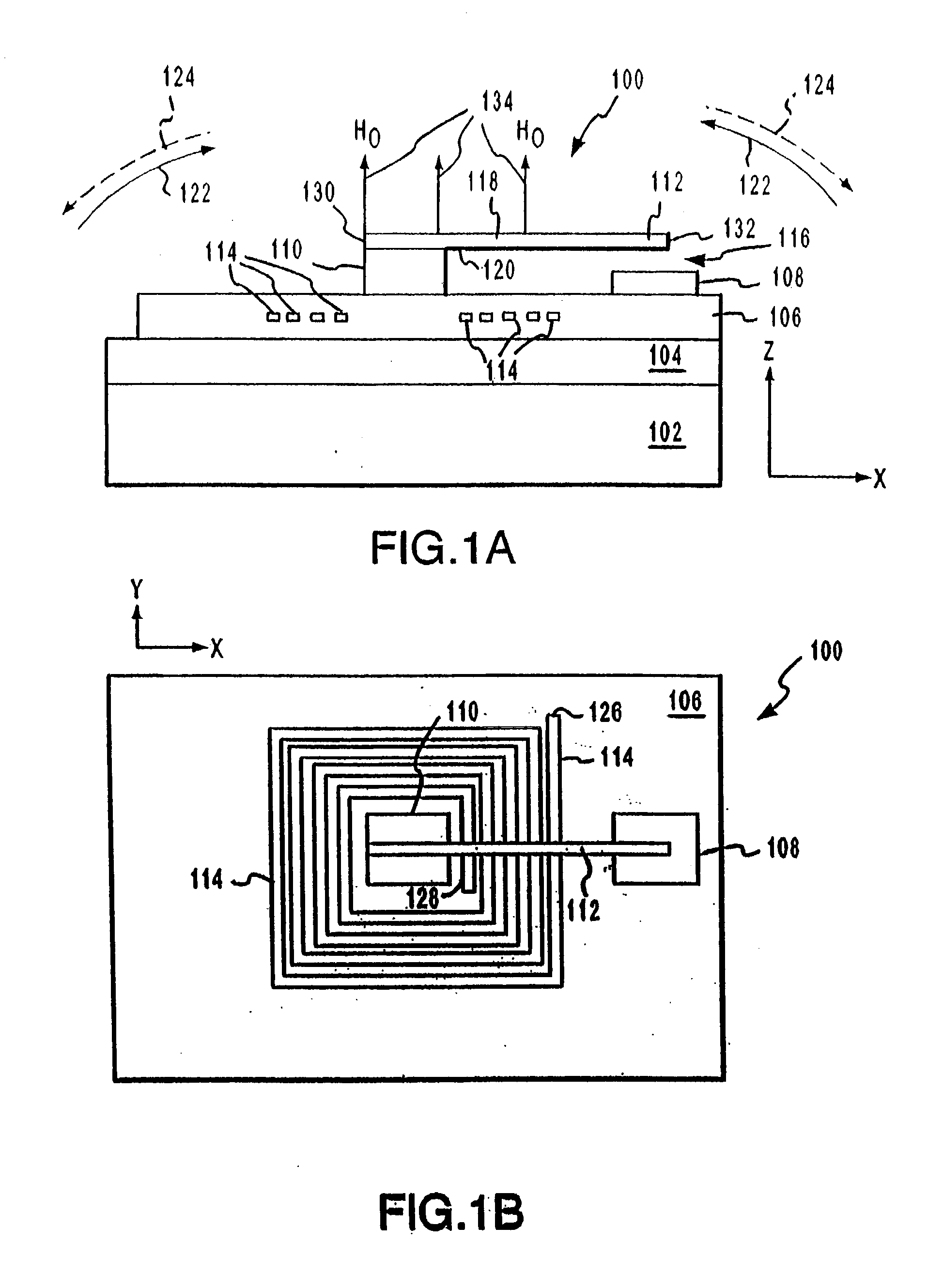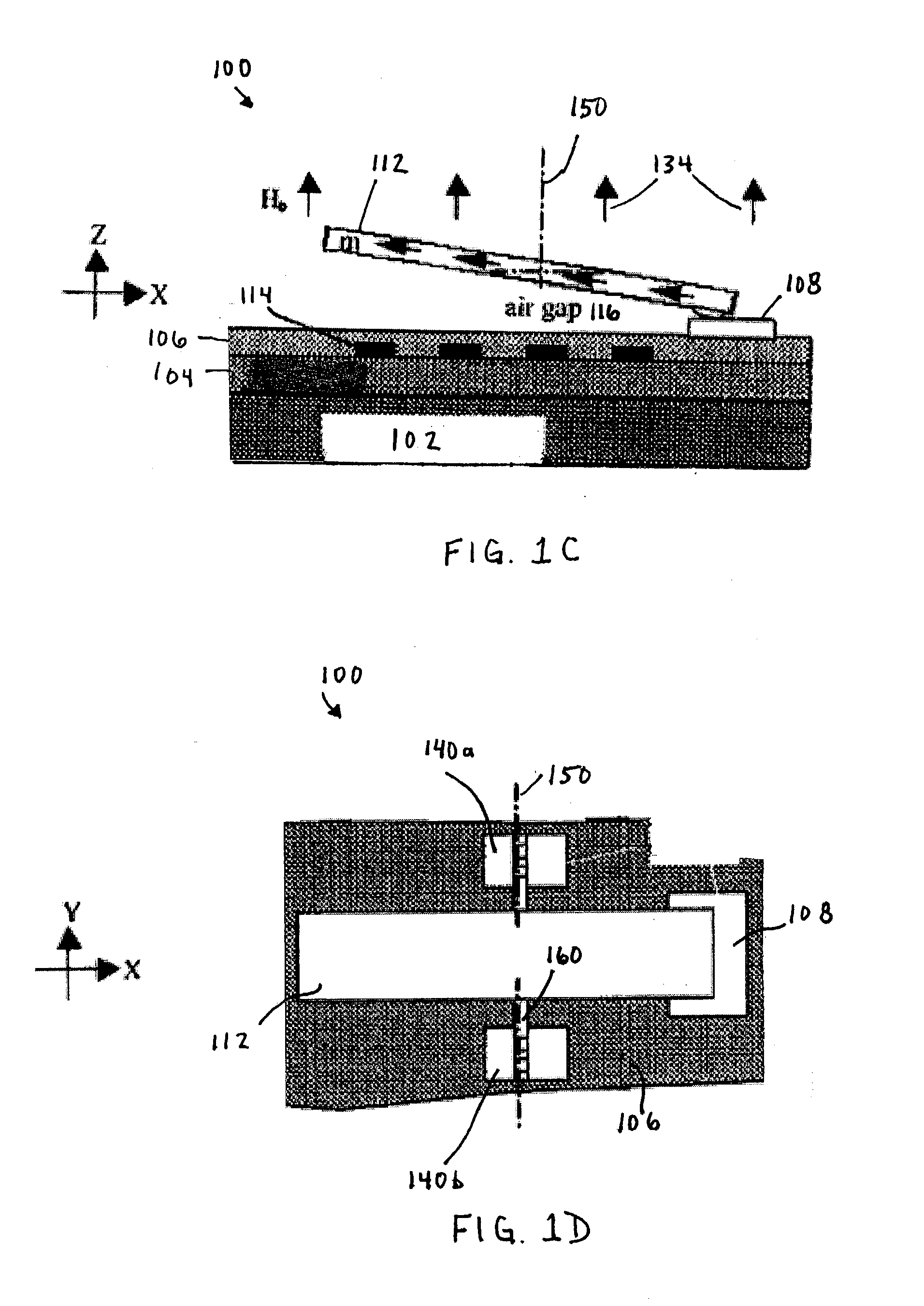Latching micro-magnetic switch array
a micro-magnetic switch and array technology, applied in the field of electromechanical switches, can solve the problems of not retaining a constant output, the spring required by conventional micro-magnetic relays may degrade or break over time, and the relay is less desirable for use in space, portable electronics, and other applications that demand low power consumption
- Summary
- Abstract
- Description
- Claims
- Application Information
AI Technical Summary
Problems solved by technology
Method used
Image
Examples
Embodiment Construction
for Actuating a Micro-Magnetic Latching Switch in an Array of Switches
[0103] FIG. 10 shows a flowchart 1000 providing steps for actuating a micro-magnetic latching switch in an array of switches, according to an example embodiment of the present invention. For example, flowchart 1000 applies to the actuation of switches in two and three dimensional arrays of switches, such switches in system 400 shown in FIG. 4, system 600 shown in FIG. 6, and system 900 shown in FIG. 9. In an embodiment, switches are configured similarly to switch or relay 100 shown in FIGS. 1A-1D, except where coil 114 may be physically separate from relay 100, such as in row of coils 404, or in a separate array of coils 602. Other structural and operational embodiments will be apparent to persons skilled in the relevant art(s) based on the following discussion. These steps are described in detail below.
[0104] Flowchart 1000 begins with step 1002. In step 1002, a first magnetic field is produced which induces a ma...
PUM
 Login to View More
Login to View More Abstract
Description
Claims
Application Information
 Login to View More
Login to View More - R&D
- Intellectual Property
- Life Sciences
- Materials
- Tech Scout
- Unparalleled Data Quality
- Higher Quality Content
- 60% Fewer Hallucinations
Browse by: Latest US Patents, China's latest patents, Technical Efficacy Thesaurus, Application Domain, Technology Topic, Popular Technical Reports.
© 2025 PatSnap. All rights reserved.Legal|Privacy policy|Modern Slavery Act Transparency Statement|Sitemap|About US| Contact US: help@patsnap.com



